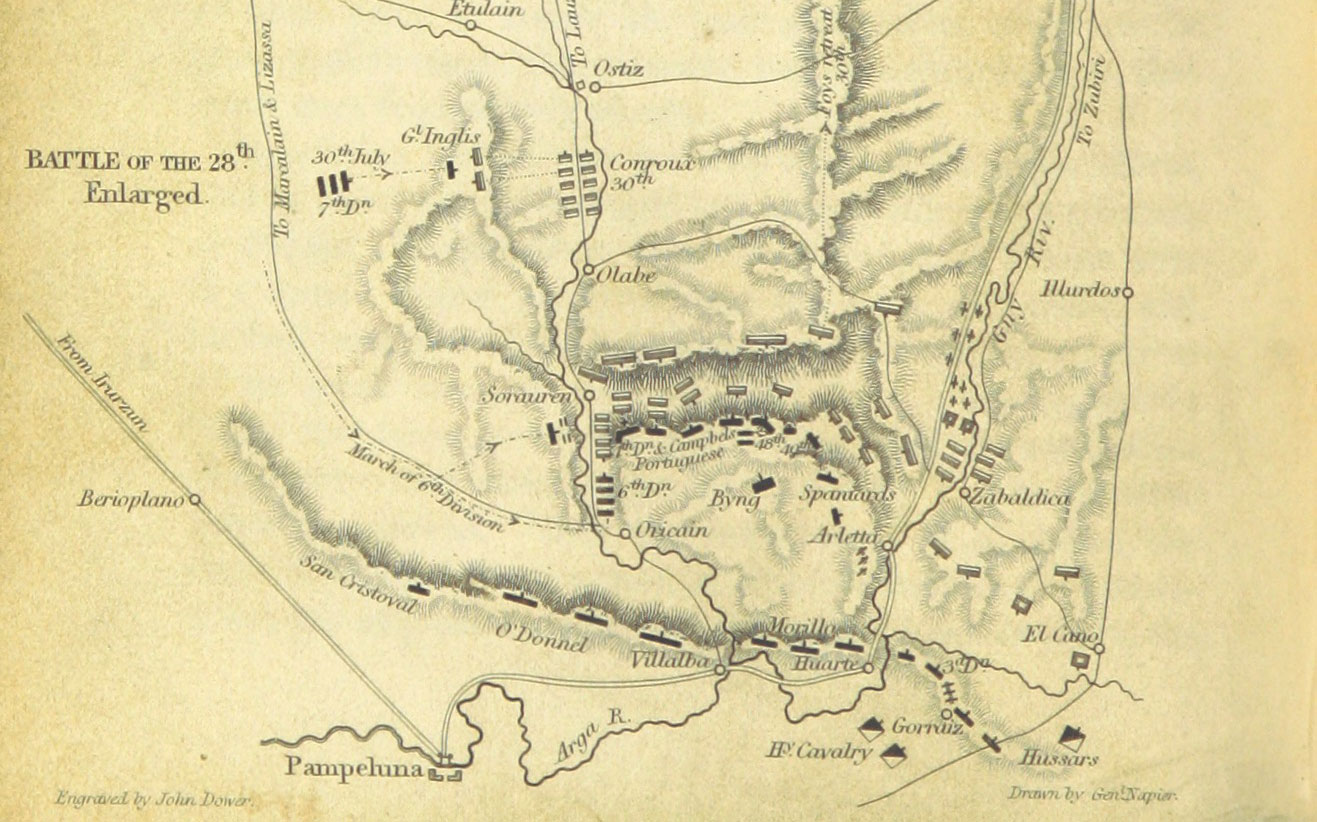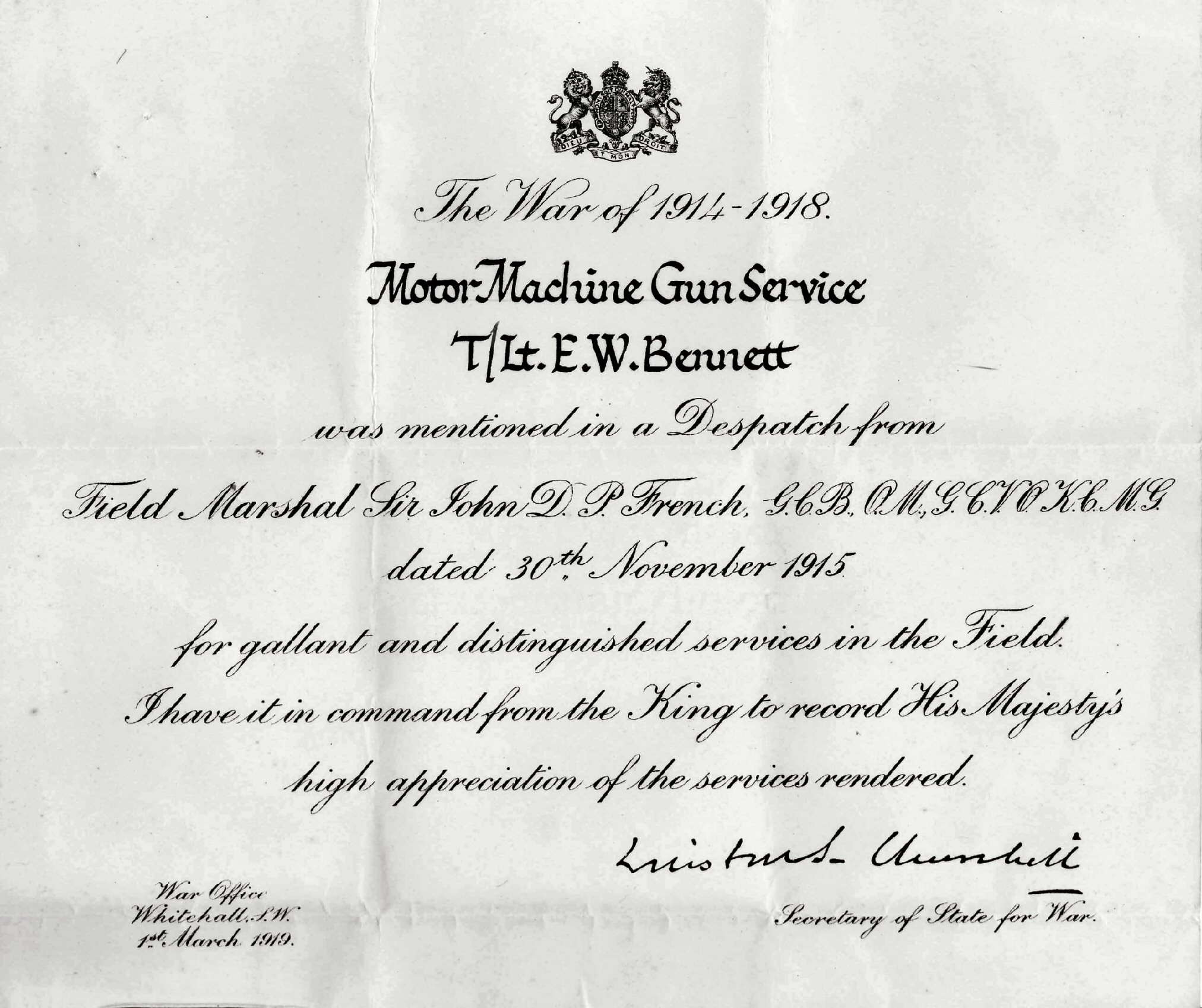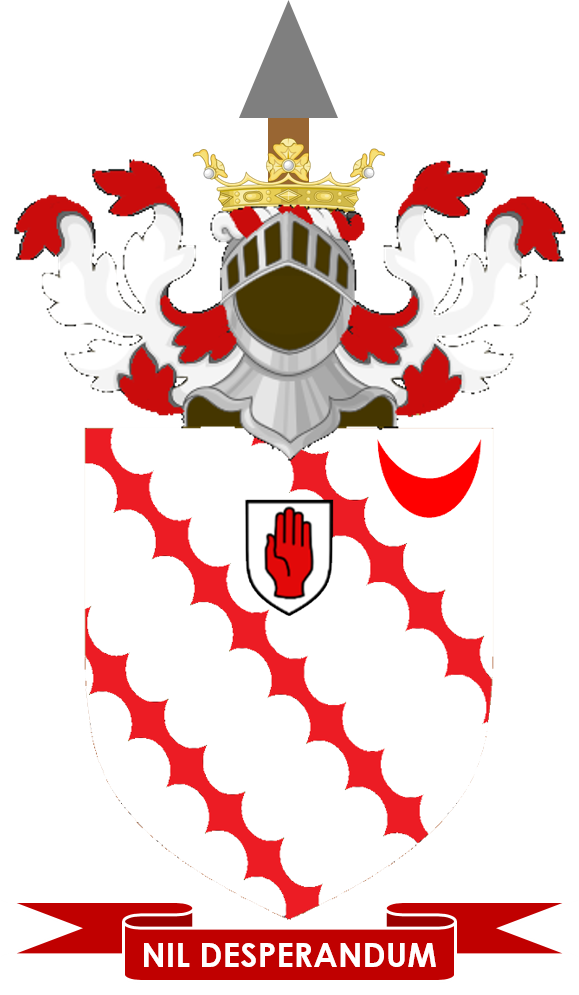|
Sir William Anson, 1st Baronet
General Sir William Anson, 1st Baronet (13 August 1772 – 13 January 1847) was a British Army officer of the Anson family. Serving in the 1st Foot Guards, Anson saw service in the Flanders Campaign during the French Revolutionary Wars. He assumed command of the 1st Battalion, 1st Foot Guards, during the Napoleonic Wars and commanded it at the Battle of Corunna. Promoted to major-general in 1811, Anson continued in the Peninsular War, commanding a brigade within the 4th Division. At the end of the Napoleonic Wars in 1814 he was given command of the 2nd Division but was not subsequently employed during the Hundred Days in 1815. Seeing no further active military service, Anson was created a baronet in 1831 and by seniority rose to the rank of general in 1837. Early life William Anson was born on 13 August 1772, the third son of George Anson and Mary Vernon; until 1773 his family went by the surname of Adams. His maternal grandfather was Lord Vernon, and his brothers includ ... [...More Info...] [...Related Items...] OR: [Wikipedia] [Google] [Baidu] |
Brockhall, Northamptonshire
Brockhall is a civil parish and village in West Northamptonshire in England. Brockhall, like many estate villages, is a small settlement that has developed around its eponymous hall. The village - Brocole in Old English - was recorded in the Domesday Book. Brocole means "Badger hole". The name is derived from "broc" ("badger" in Old English) and "hol" ("hollow" in Old English). The population is included in the civil parish of Norton. The parish church, St Peter & St Paul, is part of the Benefice of Heyford with Stowe IX Churches and Flore with Brockhall. Notable buildings Brockhall Hall was originally built by Edward Eyton. In 1625, Eyton sold the house to Thomas Thornton of Newnham. Thornton was a lawyer and also the Recorder of Daventry. In 1634 Thomas Thornton bought Newnham manor from the Knightleys of Fawsley who had held it jointly with Badby manor since 1542. Mr Thornton supported Oliver Cromwell and was later pardoned by King Charles II. Since the Civil War, five ... [...More Info...] [...Related Items...] OR: [Wikipedia] [Google] [Baidu] |
Battle Of Sorauren
The Battle of Sorauren was part of a series of engagements in late July 1813 called the Battle of the Pyrenees in which a combined British and Portuguese force under Sir Arthur Wellesley held off Marshal Soult's French forces attempting to relieve Pamplona. Prelude With sizable Anglo-Portuguese forces tied up in assaulting San Sebastián and besieging Pamplona, the new French commander Marshal Soult launched a counterattack with the ''Armée d'Espagne'' through Maya and Roncesvalles. Although the French initially enjoyed local superiority, the tough terrain combined with stubborn British and Portuguese resistance slowed the French advance to a crawl. Battle The main French column of about 40,000 men under Clausel and Reille marched to attack Sorauren. On the 27July the heavily outnumbered British forces there were drawn up on the Oricain Ridge. Wellesley made a dramatic ride along the ridge in front of the cheering British and Portuguese troops and Soult postponed ... [...More Info...] [...Related Items...] OR: [Wikipedia] [Google] [Baidu] |
George Venables-Vernon, 1st Baron Vernon
George Venables-Vernon, 1st Baron Vernon (9 February 1709 – 21 August 1780), was a British politician. Early life Vernon was born on 9 February 1709. He was the eldest, and only surviving, son of Henry Vernon, of Sudbury, Derbyshire, MP for Staffordshire and Newcastle-under-Lyme, and his wife Anne Pigott, daughter and heiress of Thomas Pigott of Chetwynd by his wife Mary Venables (sister and heiress of Sir Peter Venables of Kinderton, Cheshire). Career His father died in 1719, leaving him Sudbury Hall, and in 1728 he assumed, by royal licence, the additional surname of Venables after he had succeeded to the Cheshire estates on the death of his cousin, Anne Venables-Bertie, Countess of Abingdon (wife of Montagu Venables-Bertie, 2nd Earl of Abingdon), in accordance with the will of his uncle and her father, Sir Peter Venables. Vernon began in politics as a Tory, but by 1754 was a supporter of Administration. He sat as a Member of Parliament, as an Anti- Walpole Whig, for L ... [...More Info...] [...Related Items...] OR: [Wikipedia] [Google] [Baidu] |
George Anson (1731–1789)
George Anson (25 July 1731 – 27 October 1789), known as George Adams until 1773, was a Staffordshire landowner from the Anson family and a British Whig politician who sat in the House of Commons between 1761 and 1769. Background Anson was the son of Sambrooke Adams and his wife Janette Anson, who was the daughter of William Anson and the sister of the naval commander Admiral George Anson, 1st Baron Anson, and the dilettante Thomas Anson. Public life As George Adams, Anson was elected Member of Parliament for Saltash when his uncle died in 1761, a seat he held until 1768. He was returned to Parliament as one of two representatives for Lichfield in 1770, a seat he held until his death. In 1773, on the death of his uncle Thomas Anson he succeeded to the Anson estates, including the family seat of Shugborough Hall. He assumed by sign manual the surname and arms of Anson. Family Anson married Mary Venables-Vernon, of Sudbury Hall, daughter of George Venables-Vernon, 1st B ... [...More Info...] [...Related Items...] OR: [Wikipedia] [Google] [Baidu] |
Baronet
A baronet ( or ; abbreviated Bart or Bt) or the female equivalent, a baronetess (, , or ; abbreviation Btss), is the holder of a baronetcy, a hereditary title awarded by the British Crown. The title of baronet is mentioned as early as the 14th century; however, in its current usage it was created by James VI and I, James I of England in 1611 as a means of raising funds for the crown. Baronets rank below barons, but seemingly above all grand cross, knights grand cross, knight commander, knights commander and knight bachelor, knights bachelor of the British order of chivalry, chivalric orders, that are in turn below in chivalric United Kingdom order of precedence, precedence than the most senior British chivalric orders of the order of the Garter, Garter and the order of the Thistle, Thistle. Like all British knights, baronets are addressed as "Sir" and baronetesses as "Dame". They are conventionally seen to belong to the lesser nobility, although William Thoms in 1844 wrote tha ... [...More Info...] [...Related Items...] OR: [Wikipedia] [Google] [Baidu] |
Hundred Days
The Hundred Days ( ), also known as the War of the Seventh Coalition (), marked the period between Napoleon's return from eleven months of exile on the island of Elba to Paris on20 March 1815 and the second restoration of King Louis XVIII on 8 July 1815 (a period of 110 days). This period saw the War of the Seventh Coalition, and includes the Waterloo campaign and the Neapolitan War as well as several other minor campaigns. The phrase ''les Cent Jours'' (the Hundred Days) was first used by the prefect of Paris, Gaspard, comte de Chabrol, in his speech welcoming the king back to Paris on 8 July. Napoleon returned while the Congress of Vienna was sitting. On 13 March, seven days before Napoleon reached Paris, the powers at the Congress of Vienna declared him an outlaw, and on 25 March, Austria, Prussia, Russia and the United Kingdom, the four Great Powers and key members of the Seventh Coalition, bound themselves to put 150,000 men each into the field to end his rule. This s ... [...More Info...] [...Related Items...] OR: [Wikipedia] [Google] [Baidu] |
Major General (United Kingdom)
Major general (Maj Gen) is a "two-star" rank in the British Army and Royal Marines. The rank was also briefly used by the Royal Air Force for a year and a half, from its creation in April 1918 until August 1919. In the British Army, a major general is the customary rank for the appointment of division commander. In the Royal Marines, the Commandant General holds at least the rank of major general. A major general is senior to a brigadier but subordinate to a lieutenant general. The rank is OF-7 on the NATO rank scale, equivalent to a rear admiral in the Royal Navy or an air vice-marshal in the Royal Air Force and the air forces of many Commonwealth countries. Insignia and nomenclature The rank insignia is the star (or 'pip') of the Order of the Bath, over a crossed sword and baton. In terms of orthography, compound ranks were invariably hyphenated prior to about 1980. Nowadays the rank is almost equally invariably non-hyphenated. When written as a title, especiall ... [...More Info...] [...Related Items...] OR: [Wikipedia] [Google] [Baidu] |
Anson Family
The Anson family is a British aristocratic family. Over time, several members of the Anson family were made knights, baronets and peers. Hereditary titles held by the Anson family include the earldom of Lichfield (since 1831) and the Anson baronetcy (also since 1831). Over time, several members of the family have risen to prominence, including Admiral of the Fleet George Anson, 1st Baron Anson, PC, FRS (1697–1762) and the society photographer Patrick Anson, 5th Earl of Lichfield (1939–2005). History The Anson family is descended from William Anson (c.1580–1644), a Staffordshire lawyer, who purchased Shugborough Hall in 1624. His grandson, also William (1656–1720), was father to George (1697–1762), an Admiral and 1st Baron Anson; Thomas (1695–1773), MP for Lichfield; and Janette (1690–1771), whose son George Anson (1731-1789) inherited the family fortune and estate. George, a Member of Parliament for Lichfield from 1770 to 1789, was born George Adams, ... [...More Info...] [...Related Items...] OR: [Wikipedia] [Google] [Baidu] |
Mentioned In Dispatches
To be mentioned in dispatches (or despatches) describes a member of the armed forces whose name appears in an official report written by a superior officer and sent to the high command, in which their gallant or meritorious action in the face of the enemy is described. In some countries, a service member's name must be mentioned in dispatches as a condition for receiving certain decorations. Being mentioned in dispatches entitles a recipient to wear a small metallic device, but does not include an entitlement to post-nominals. United Kingdom, British Empire and Commonwealth of Nations United Kingdom Servicemen and women of the United Kingdom or the Commonwealth who are mentioned in despatches are not awarded a medal for their actions, but receive a certificate and wear an oak leaf device on the ribbon of the appropriate campaign medal. A smaller version of the oak leaf device is attached to the ribbon when worn alone. Prior to 2014, only one device could be worn on a ribb ... [...More Info...] [...Related Items...] OR: [Wikipedia] [Google] [Baidu] |
Medal Bar
A medal bar or medal clasp is a thin metal bar attached to the ribbon of a military decoration, civil decoration, or other medal. It most commonly indicates the Military campaign, campaign or Military operation, operation the recipient received the award for, and multiple bars on the same medal are used to indicate that the recipient has met the criteria for receiving the medal in multiple Theater (warfare), theatres. When used in conjunction with decorations for exceptional service, such as gallantry medals, the term "and bar" means that the award has been bestowed multiple times. In the example, "Group Captain Leonard Cheshire, Victoria Cross, VC, Order of Merit, OM, Distinguished Service Order, DSO and two bars, Distinguished Flying Cross (British), DFC", "DSO and two bars" means that the Distinguished Service Order was awarded on three occasions. A British convention is to indicate bars by the use of asterisks; thus, DSO** would denote a DSO and two bars. Bars are also used ... [...More Info...] [...Related Items...] OR: [Wikipedia] [Google] [Baidu] |
Army Gold Cross
The Army Gold Medal (1808–1814), also known as the Peninsular Gold Medal, with an accompanying Gold Cross, was a British campaign medal awarded in recognition of field and general officers' successful commands in campaigns, predominantly the Peninsular War. It was not a general medal, since it was issued only to officers whose status was no less than that of battalion commander or equivalent.Dorling, pages 54-55 Background Naval Gold Medals had been awarded since 1794 to captains and admirals who had served in specified successful naval actions, admirals' medals being larger. In 1806 a special gold medal was presented to British Army majors and above who had taken a key part in the Battle of Maida. This medal, in diameter, shows the profile of King George III on the obverse with a reverse design incorporating Britannia and the Sicilian triskeles. A general campaign medal for the Napoleonic Wars, awarded to all British troops irrespective of rank, would only be establishe ... [...More Info...] [...Related Items...] OR: [Wikipedia] [Google] [Baidu] |
Anson Baronets
The Anson baronetcy, of Birch Hall in the County Palatine of Lancaster, is a title in the Baronetage of the United Kingdom held by a branch of the Anson family. The baronetcy was created on 30 September 1831 for William Anson. He was the third son of George Anson; his elder brothers were Thomas Anson, 1st Viscount Anson, and General Sir George Anson. Sir William was the uncle of Thomas Anson, 1st Earl of Lichfield, and Major-General George Anson and the great-nephew of George Anson, 1st Baron Anson (see Earl of Lichfield, 1831 creation, for more information on the Anson family). His grandson, the third Baronet, was a lawyer and Liberal Unionist politician. He never married and was succeeded by his nephew, the fourth Baronet. He was the only son of Frederick Arthur Anson, third son of the second Baronet. The fourth baronet drowned in the Thames on an outing of The Coterie in July 1914, after he jumped into the river encouraged by Lady Diana Manners. He had not married and on ... [...More Info...] [...Related Items...] OR: [Wikipedia] [Google] [Baidu] |










